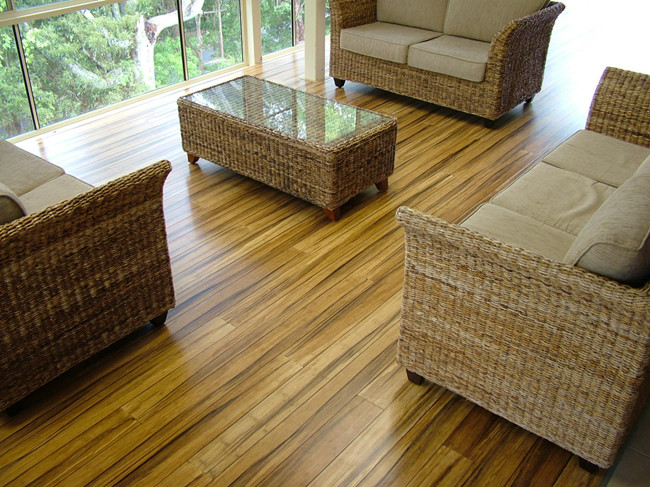In recent years, the world of flooring has witnessed a significant shift towards eco-friendly and sustainable options. Among these, bamboo flooring has emerged as a popular choice due to its unique combination of style, durability, and environmental benefits. In this article, we will delve into the world of bamboo flooring, exploring its advantages, types, installation process, and maintenance requirements.

What is Bamboo Flooring?
Bamboo flooring is made from bamboo, a highly renewable and sustainable resource. Bamboo is a type of grass that grows at an incredible rate, with some species reaching maturity in as little as three to five years. This rapid growth rate, combined with its natural resistance to pests and diseases, makes bamboo an ideal alternative to traditional hardwood flooring.
Advantages of Bamboo Flooring
Bamboo flooring offers a range of benefits that make it an attractive option for homeowners and businesses. Some of the key advantages include:
- Sustainability: Bamboo is a highly renewable resource, with a growth rate that far exceeds that of traditional hardwoods. This makes bamboo flooring an excellent choice for those looking to reduce their environmental footprint.
- Durability: Bamboo flooring is incredibly durable, with a lifespan that can range from 20 to 30 years or more with proper maintenance.
- Resistance to Moisture: Bamboo is naturally resistant to moisture, making it an ideal choice for areas with high humidity or water exposure.
- Pest and Disease Resistance: Bamboo has a natural resistance to pests and diseases, which reduces the need for chemical treatments and pesticides.
- Aesthetics: Bamboo flooring offers a unique and stylish appearance, with a range of colors and textures to suit different design preferences.
Types of Bamboo Flooring
There are several types of bamboo flooring available, each with its own unique characteristics and benefits. Some of the most common types include:
- Solid Bamboo Flooring: Made from solid bamboo planks, this type of flooring offers excellent durability and a natural, rustic appearance.
- Engineered Bamboo Flooring: This type of flooring features a bamboo veneer layered over a plywood or MDF core, making it more stable and resistant to moisture.
- Strand-Woven Bamboo Flooring: This type of flooring is made from strands of bamboo that are woven together and compressed, creating a highly durable and dimensionally stable product.
- Carbonized Bamboo Flooring: This type of flooring is made from bamboo that has been heat-treated to give it a rich, dark color and a unique texture.
Installation Process
The installation process for bamboo flooring is similar to that of traditional hardwood flooring. Here are the general steps involved:
- Preparation: The subfloor must be prepared to ensure it is level, clean, and dry.
- Acclimation: The bamboo flooring must be acclimated to the installation environment for at least 24 hours prior to installation.
- Installation: The bamboo flooring is installed using a tongue-and-groove system, with each plank clicked into place.
- Finishing: The flooring is sanded and finished with a protective coating to enhance its appearance and durability.
Maintenance Requirements
Bamboo flooring is relatively low maintenance, but it does require some care to ensure its longevity. Here are some tips for maintaining your bamboo flooring:
- Sweep and Vacuum: Regularly sweep and vacuum the flooring to remove dirt and debris.
- Clean Spills: Clean spills immediately to prevent damage to the flooring.
- Avoid Excessive Moisture: Avoid exposing the flooring to excessive moisture, such as from a leaky pipe or excessive humidity.
- Use Protective Pads: Use protective pads on furniture legs to prevent scratching and damage to the flooring.
FAQs
- Is bamboo flooring suitable for high-traffic areas?: Yes, bamboo flooring is highly durable and suitable for high-traffic areas.
- Can bamboo flooring be installed over concrete?: Yes, bamboo flooring can be installed over concrete, but a moisture barrier must be installed first.
- How do I clean bamboo flooring?: Bamboo flooring can be cleaned with a mild soap and water solution, or a specialized bamboo flooring cleaner.
- Can bamboo flooring be refinished?: Yes, bamboo flooring can be refinished, but it may require specialized equipment and expertise.
- Is bamboo flooring resistant to pests and diseases?: Yes, bamboo flooring has a natural resistance to pests and diseases, but it is not immune to damage from these sources.
Conclusion
Bamboo flooring is a stylish, durable, and sustainable option for homeowners and businesses looking to reduce their environmental footprint. With its unique combination of benefits, including sustainability, durability, and resistance to moisture, bamboo flooring is an excellent choice for a range of applications. Whether you’re looking to install new flooring in a high-traffic area or simply want to add a touch of natural beauty to your home, bamboo flooring is definitely worth considering. By following the tips and guidelines outlined in this article, you can enjoy the many benefits of bamboo flooring for years to come.
Closure
Thus, we hope this article has provided valuable insights into The Sustainable and Stylish World of Bamboo Flooring. We hope you find this article informative and beneficial. See you in our next article!